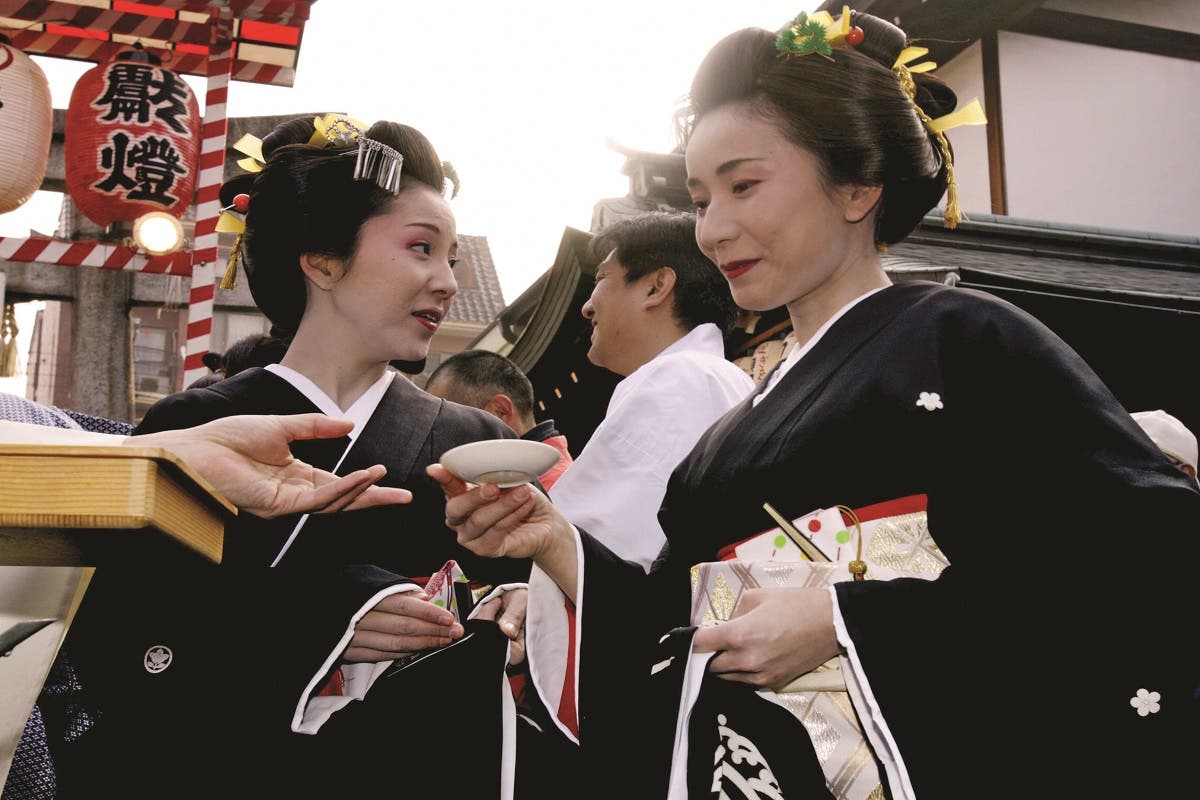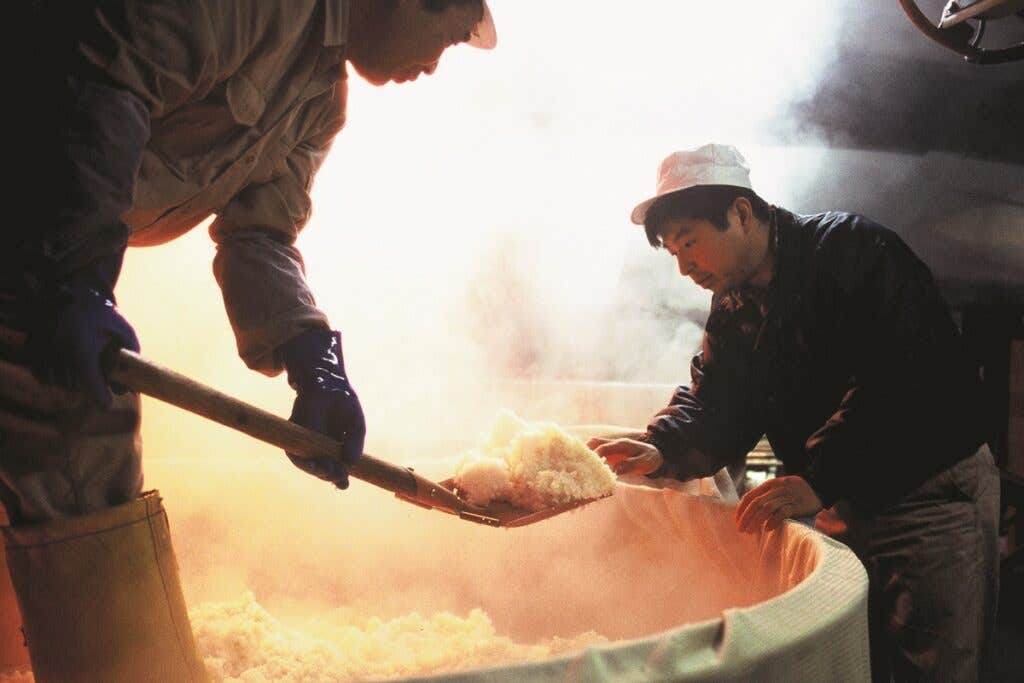
One night on a recent trip to Japan, I met some friends at a Tokyo sake bar that was filled with young people sharing sakes and small plates. The waitress suggested a bottle, then returned with it and poured us each a cup. We sipped, and I nearly dropped my drink, staggered by the bold flavors in the glass: tropical flowers, fruit salad, herbs. It was wild and delicious. I had thought I knew sake, but I'd never tasted one as striking as this.
Intrigued, I looked up the guy who had made this mind-blowing stuff—Niichiro Marumoto, the sixth-generation brewmaster at Chikurin Marumoto Sake Brewery—and gave him a call. What I'd tasted, Marumoto explained, was the result of a sea change in sake making. Sake, a rice brew at least two millennia old, has long been enjoyed here with all kinds of traditional foods, as part of celebrations, and for rituals at Buddhist temples and Shinto shrines. But in recent decades, young people have turned away from sake, instead opting for beer, wine, and Western spirits. To appeal to this new generation, Marumoto said, he and other sake brewers have looked for ways to coax more intense flavors out of the subtle drink. “If you want to know more,” he added, “come visit my brewery.”
I took a train to the city of Asakuchi, on the southwestern coast of Honshu, the largest of Japan's four main islands. Marumoto, a tall, good-humored guy, led me into his family's 146-year-old sake works just as his crew was steaming an enormous vat of rice. To make sake, he told me, grains of rice are first milled, or "polished," to remove their outer layers, which can adversely affect sake's flavors. (The amount of each grain remaining after polishing determines the grade of the sake: 70 percent is left for junmai, or "pure rice," sakes; 60 percent for junmai ginjo; and just half of the grain remains for the highly refined junmai daiginjo.) After it is steamed and cooled, the rice is inoculated with koji, a mold that breaks down the starch into simple sugars, which the yeast—introduced next with plenty of water—converts to alcohol. The mixture ferments for months. Then Marumoto's team filters, pasteurizes, and bottles the brew.
While this basic process is used for most sakes, tweaks to any of the steps can yield wildly different results. Marumoto grows his own rice to ensure its quality. He filters his water, removing hard minerals to make it as soft as possible; this helps slow the rate of fermentation, allowing flavors and aromas time to develop. And he ferments with yeasts known for producing pronounced flavors. Before I departed, he poured me a glass of his Chikurin Karoyaka Junmai Ginjo sake. It smelled lightly of frangipane flowers and tasted of apples, longan fruit, cherries. Multilayered yet elegant, it would be a great match for all kinds of sushi. If I liked this, Marumoto said, I should check out Saiya Brewery. The brewmaster there was also up to something unusual.

I hopped a train north to Yurihonjo, a city surrounded by snowy mountains forested in cedar and pine. The cold climate here makes for sluggish yeast, and in the drawn-out fermentation period, the sakes' flavors intensify. Here, Saiya's brewmaster Toichi Takahashi, a lean, energetic 65-year-old, eschews the standard commercial yeasts, working instead with homegrown ones that he's isolated over the years from batches of particularly good sake. Each unique yeast—11 in all—has a distinct flavor profile, reflected in the various bottles of his Yuki No Bosha brand. The Akita Komachi Daiginjo smells of ripe cantaloupe and chrysanthemums, but there's a bracing, peppery acidity to it that pairs well with spicy foods, just like a great alpine white wine.
I spent the rest of my trip drinking sake at every opportunity. I found umami-rich, earthy, almost savory sakes, and yogurty, unpasteurized namazake sakes that tasted of strawberries and cream. But perhaps the most exciting ones I tried came from brewers experimenting with the drink's most fundamental ingredient, the rice. Takaaki Yamauchi, the seventh-generation brewer at Huchu Homare Brewery, has worked for a quarter-century to revive an heirloom variety called Watari Bune, shepherding it back from the brink of extinction using a handful of grains that had been preserved at a Japanese gene bank. Watari Bune, whose name means “ferry boat,” is prized for its high starch content; it makes a particularly full-bodied sake.
The day before I left the country, I went to Ishioka, 60 miles northeast of Tokyo, to visit Yamauchi in his rice fields. The harvest had begun. Under the morning sun, I tried my hand at a traditional scythe, slicing awkwardly at the tall, tough stalks. At noon, we paused for lunch. As pork belly cooked on a low charcoal grill, Yamauchi poured me one of his sakes. Pineapple laced with pear and melon, hints of cedar and walnuts and rich soil—it would go perfectly with the grilled meat. Gazing out at the golden fields and marveling over the fantastic range of flavors that its rice had brought to my glass, I toasted to sake's delicious revival.
Keep Reading
Continue to Next Story










